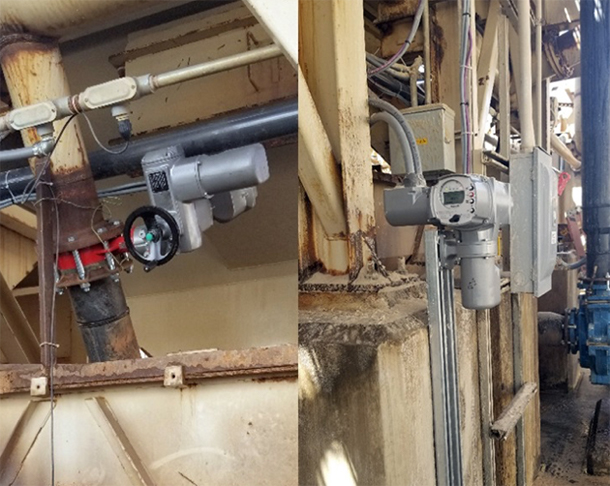AUMA electric actuators are proving their durability under extreme operating conditions at facilities processing frac sand in Tomah, Wisconsin, USA.
The AUMA units withstand high levels of vibration and periodic flooding that have defeated other actuators in a matter of days.
AUMA supplied 17 SQR 07.2 actuators with AC 01.2 controls at the end of May 2018. They are installed at four facilities operated by Hi-Crush Operating LLC, which produces frac sand for the US oil and gas market. The actuators control water flows around hydrosizers, which use water to separate the frac sand into sharply defined size fractions.
According to Matt Kaczmarek of Dorner Co., a vendor of valves and actuators, Hi-Crush was having to replace the previous actuators on a weekly basis because extreme vibration was damaging them, especially their electronic components: "The commodity actuators were vibrating apart, and the control boards and potentiometers were failing left and right."

In addition, sudden deluges of water from an overflowing tank above made it hard to install replacements. "Hi-Crush wrecked numerous actuators during setup," Matt Kaczmarek says. "They would have an actuator opened up for calibration and water would come down from above, frying the actuator."
The new AUMA actuators allow the AC 01.2 controls to be mounted remotely from the actuator bodies, to which they are linked by 35-ft (10-meter) cables. This simplifies installation and aids operators in checking the status of the actuators. Most importantly, it improves reliability by removing the electronics from the areas of high vibration.
Compared to the previous commodity actuators, the AUMA units are also easier to calibrate and maintain. Setup can be done non-intrusively, without opening the actuator housing, so flooding at the Hi-Crush plants is not a problem. If issues do arise, AUMA's powerful diagnostics show maintenance staff exactly where to look.
"AUMA was more expensive initially," says Matt Kaczmarek, "but the new actuators have been paying themselves off for the last few months as they have been operating with no major issues."
"Previously, the customer would spend hours diagnosing actuator failures. Then they would still have to replace the part that failed, recalibrate and test, which equated to hours and hours of downtime. Oftentimes, even after replacing parts they would find something else was wrong and have to replace the whole actuator."
About frac sand
Frac sand is a type of natural quartz sand used as a "proppant" to wedge open cracks in oil- and gas-bearing rock after hydraulic fracturing (fracking). It is characterized by its purity, uniform grain size and shape, and high compressive strength. US production of frac sand has boomed since 2010. Production involves mining, washing, drying, and size fractionation.
|

